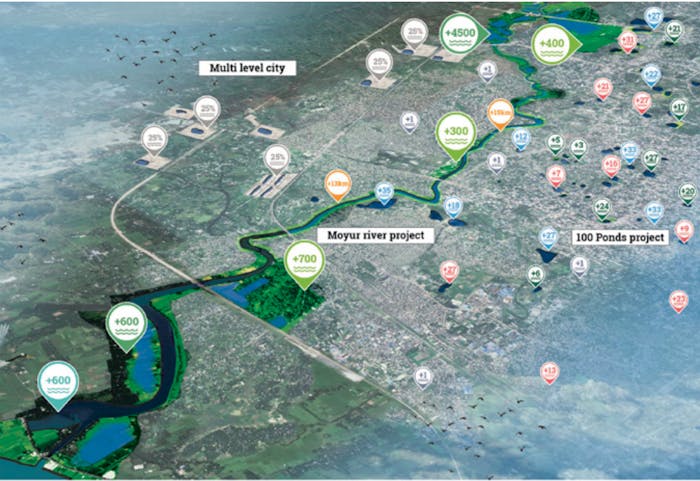Meet the Khulna as a Water Inclusive Enclave Team
The Khulna as a Water Inclusive Enclave team is led by CDR International. Their team works with water infrastructure contractors in Bangladesh and focuses on feasibility and bankable projects.
Defacto is the design lead and a strategic partner in the complex urban planning context of Khulna. Members bring experience and ideas from their input to the Delta Plan 2100 for Bangladesh.
DevConsultant is a partner from Bangladesh that focuses on the social and environmental effects of the conceptual designs. Their team provides support in translating Dutch expertise to the context of Bangladesh.
Nelen & Schuurmans focuses on flood modelling and interactive visualisation tools which are key in the regional workshops.
RoyalHaskoningDHV contributes flood resilience experience from working on comparable challenges elsewhere on the planet and their strong record of urban flood resilience projects.
Through Khulna University the team has a permanent presence on the ground in the city that helps to pass on the team's philosophy to a younger generation of scholars and scientists.
Wageningen University and Research (WUR) adds knowledge of the complex planning context in Bangladesh by means of delta planning and management, including at the nexus of agriculture and food supplies.
Created in partnership with: Defacto Architecture & Urbanism, DevConsultant, Nelen en Schuurmans, RoyalHaskoningDHV, Khulna University, Wageningen University and Research.

 06 Clean Water and Sanitation
06 Clean Water and Sanitation
 09 Industry, Innovation and Infrastructure
09 Industry, Innovation and Infrastructure
 11 Sustainable Cities and Communities
11 Sustainable Cities and Communities
 13 Climate Action
13 Climate Action
 14 Life Below Water
14 Life Below Water
 15 Life On Land
15 Life On Land